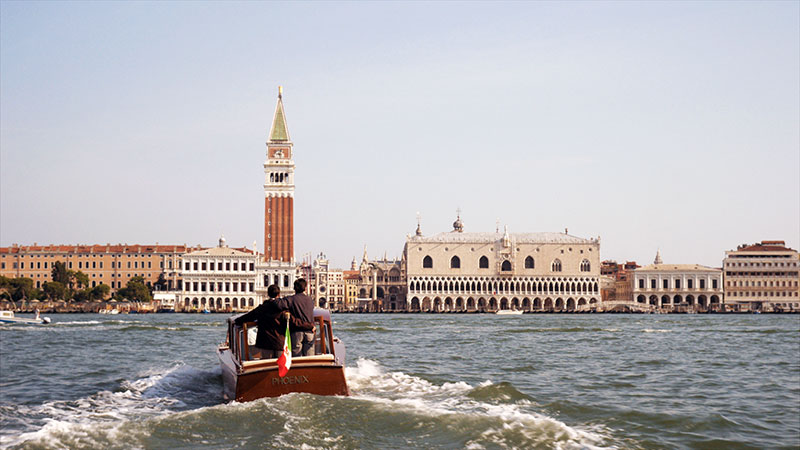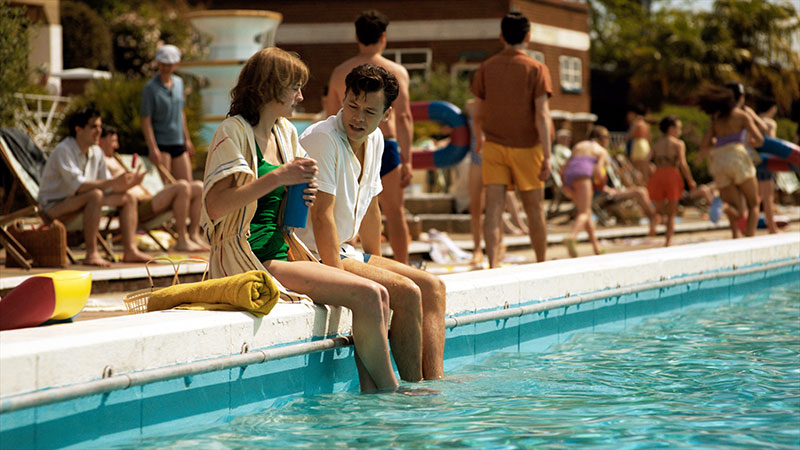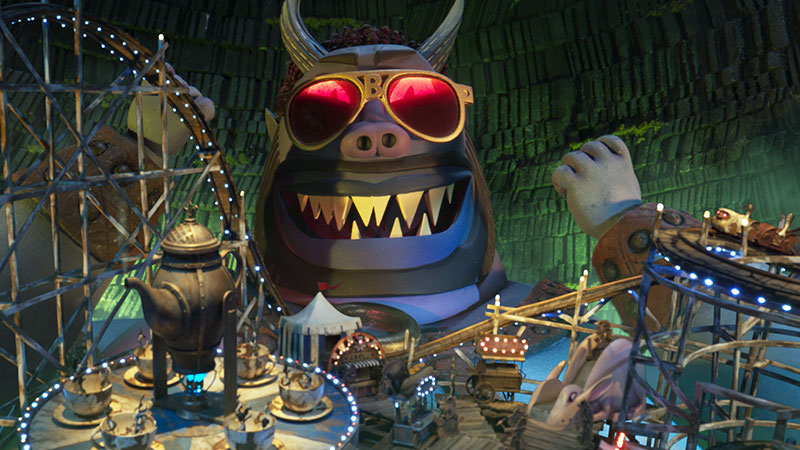Working as sole vendor, BlueBolt delivered 152 invisible effects shots for this movie that needed to look and feel completely authentic to tell its dramatic story across two timelines.

‘My Policeman’, a drama streaming on Amazon Prime Video, is a film for our times. Though today’s gay and lesbian community face many challenges, they might be considered slight when compared to the situation that confronted their counterparts in 1950s England, when homosexuality was not only regarded as an outrage but was illegal.
The movie is based on a 2012 novel of the same name, in which a Brighton police officer Tom pursues a same-sex love affair although he is married to a schoolteacher, Marion, and must also deal with the consequences when his wife discovers his infidelity.
Two Timelines
The story unfolds across two timelines as the viewer watches how the events of their youth determine the characters’ relationships much later in life, and therefore needed to look and feel completely authentic in order to maintain the focus on the characters.
Led by VFX supervisor David Dowie Dunn, theteam at BlueBolt worked on the film as sole vendor, used subtle effects to return modern day Brighton to the 1950s, delivering 152 invisible VFX shots. Initial conversations with the Director Michael Grandage in March 2021 made it clear that the locations for the film were key to the story and had to align accurately with the time periods. BlueBolt’s job was to aid that vision by discreetly removing anything inconsistent with the chronology, which shifts between the 1950s and early ‘90s.
Filming concluded in June 2021 and the team moved into post. “We completed a few shots for a temp screening initially before getting into proper shot work,” said David. The project lasted about 13 months from the first script read to delivery of the final shot, and shooting took place at multiple locations in Brighton, with some scenes filmed in Venice.
At the Locations
The colourful 1950s Brighton beach scenes were shot at the quieter Newhaven beach. Digital matte painting was used to add a period correct Brighton seafront and pier, and the beach was dressed out in VFX with additional beachgoers.

“Mark Michaels, who was also a compositor on the show, handled on-set supervision for the Brighton beachfront shots and gathered background textures for our DMP team to work into the 1950s-period Brighton backgrounds we see in the beach sequences,” David said. “He also attended the plate shoot in Venice for our green screen shots that show the view from the hotel. These plates were then stitched to give us the elevated view over the Venice canals.
Matching Historical Reference
“We did our own research into the look of Brighton beachfront during the those years. The shots were set dressed as much as possible in the foreground of the plates to match historical reference, while our DMP team went into the finer detail of creating the mood and feel of that time.
“Clean-up to de-modernise the base plates was needed to bring them to the correct period, as well as populating the plates with more crowds shot as green screen elements and composited in. Attention to detail was very important, from shapes of the railing and the correct cars, buses and other vehicles for the time and, of course, costume. The correct choice of architecture to best match our 1950s references was integral as well.”

All of these considerations added up to a very large number of 2D elements that needed to work together in every shot. Once the authenticity was captured, relighting to match the plate lighting was also imperative in achieving the realism and seamless integration between all elements achieved in the shots.
2.5D Workflow
“Because the camera moves were linear in the shots, we were able to set up hero look shots using a 2.5D workflow for DMP and plate integration,” said David. “After setting up the scene, the cameras for each shot could be plugged in to pick up the camera move for that shot. Projections were done in Nuke with cards, since the limited parallax in the shots did not demand a full geometry approach.
“It was very much a layered setup with the foreground crowd and beach as an element and background animated crowd and vehicles as separate layers, too. The background buildings were on a layer, as well as the Sky Dome to allow for some subtle cloud animation, and there were also some seagulls on a layer to add another level of seaside realism.
Templates and Contct Sheets
“Once the look was established In our look development shots. a template for each sequence would be established on the hero shots. These templates were released to the artists who used them to populate the shots for a first pass in Compositing. As well as holding regular sequence reviews to track progress and continuity across the shots and sequences, we also set up daily contact sheets for continuity throughout each sequence.”

Creating the contact sheets involved rendering out all the shots in a given sequence as thumbnails on a single output for review. David and the team would check continuity between shots for details such as background action, progression of vehicles, cars and buses and pedestrians through the sequence.
This process also gave them a chance to check that the added foreground crowd elements were all working well and that elements like black levels, white point, colour temperature, flaring and integration were all working together between shots.
The 1990s setting needed a lighter touch of VFX help to achieve continuity between overcast skies and drizzle to set the mood of the story at this point. These were achieved using a mixture of plate photography and further DMP work. www.blue-bolt.com


















